Higher classification Dracaena | Rank Species | |
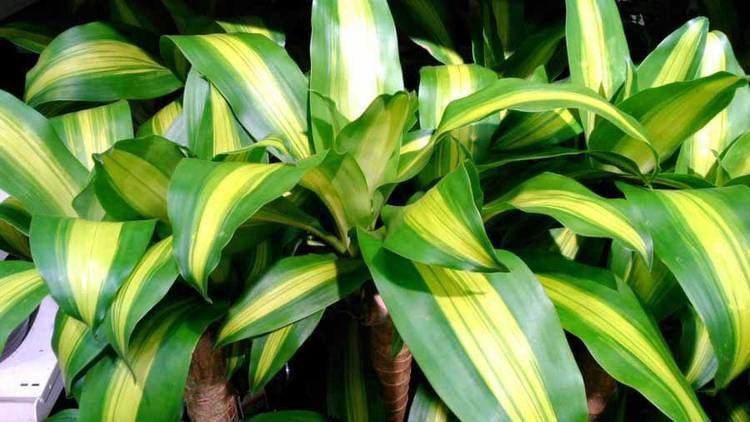 | ||
Similar Dracaena, Dragon tree, Peace lily, Dracaena reflexa, Chinese evergreens | ||
Dracaena fragrans corn plant
Dracaena fragrans (cornstalk dracaena) is a flowering plant species that is native throughout tropical Africa, from Sudan south to Mozambique, west to Côte d'Ivoire and southwest to Angola, growing in upland regions at 600–2,250 m (1,970–7,380 ft) altitude.
Contents
- Dracaena fragrans corn plant
- Dracaena fragrans cornstalk dracaena
- Description
- Cultivation and uses
- Propagation
- Etymology and synonymy
- References
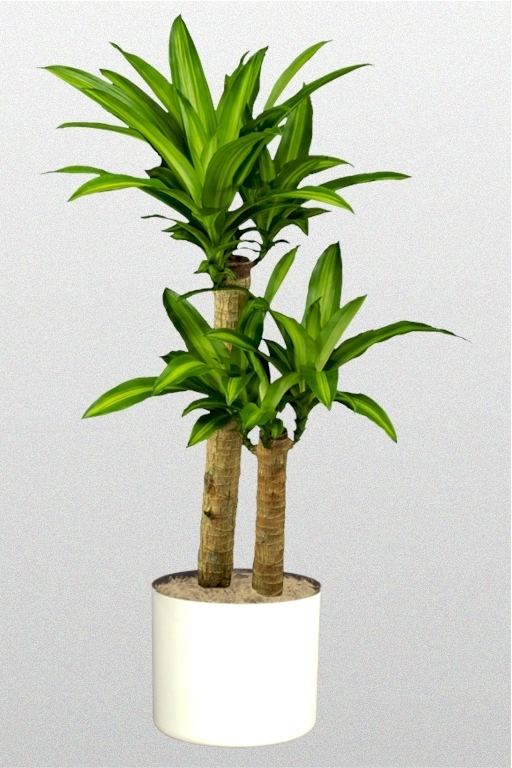
Dracaena fragrans cornstalk dracaena
Description
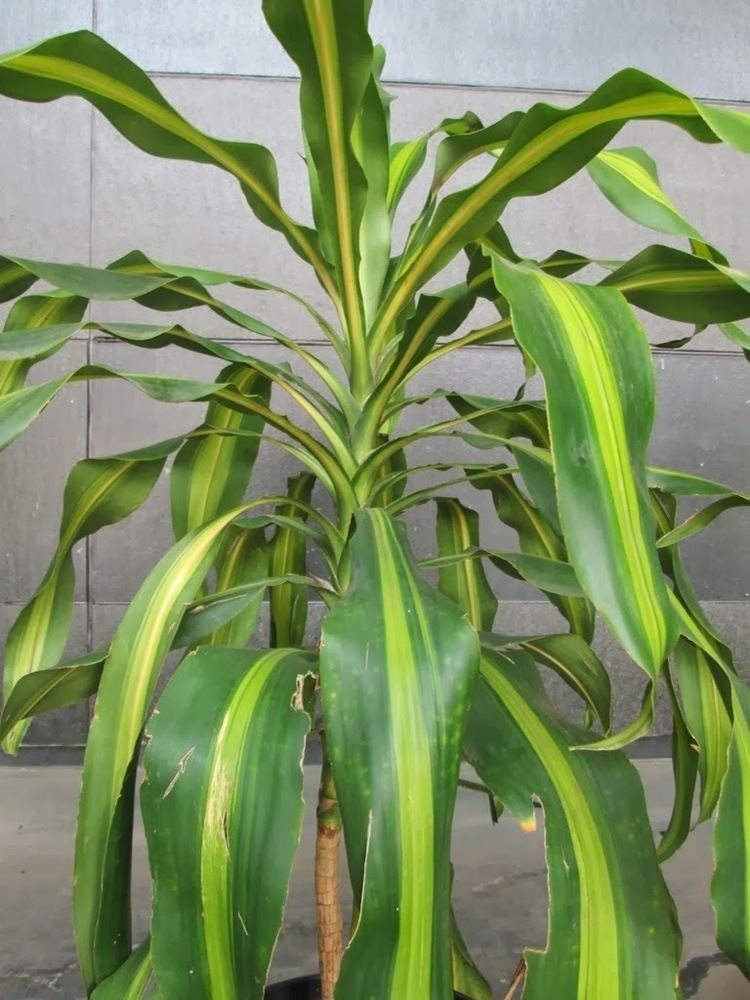
Dracaena fragrans is a slow growing shrub, usually multistemmed at the base, mature specimens reaching 15 m (49 ft) or more tall with a narrow crown of usually slender erect branches. Stems may reach up to 30 cm (12 in) diameter on old plants; in forest habitats they may become horizontal with erect side branches. Young plants have a single unbranched stem with a rosette of leaves until the growing tip flowers or is damaged, after which it branches, producing two or more new stems; thereafter, branching increases with subsequent flowering episodes.
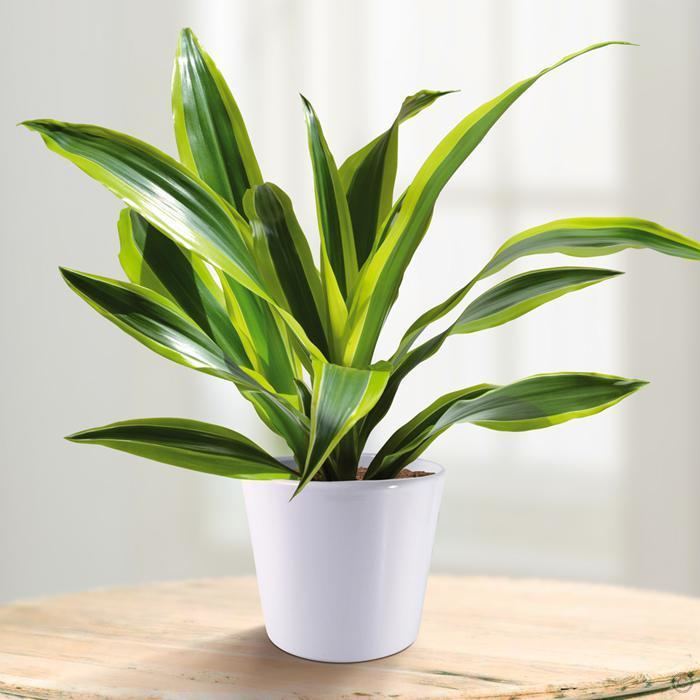
The leaves are glossy green, lanceolate, 20–150 cm (7.9–59.1 in) long and 2–12 cm (0.79–4.72 in) wide; small leaves are erect to spreading, and larger leaves usually drooping under their weight. The flowers are produced in panicles 15–160 cm (5.9–63.0 in) long, the individual flowers are 2.5 cm (0.98 in) diameter, with a six-lobed corolla, pink at first, opening white with a fine red or purple central line on each of the 7–12 mm (0.28–0.47 in) lobes; they are highly fragrant, and popular with pollinating insects. The fruit is an orange-red berry 1–2 cm (0.39–0.79 in) diameter, containing several seeds.
Cultivation and uses
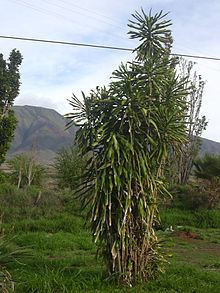
In Africa, D. fragrans is widely grown as a hedge plant; it is suited to frost-free climates, in USDA zones 10-11. Elsewhere, it is primarily popular as a houseplant, valued for its tolerance of a wide range of indoor conditions from full sun to low light conditions. It is also very tolerant of neglect, and has been shown by the NASA Clean Air Study to help remove indoor pollutants such as formaldehyde, xylene and toluene. The plant is known as "masale" and is a holy plant to the Chagga people of Tanzania.
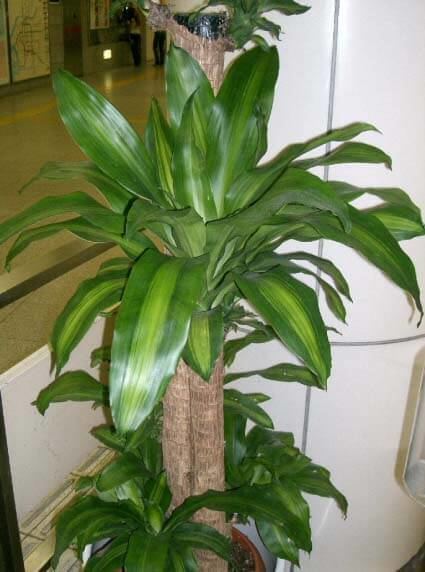
Several cultivars are available with variegated leaves. 'Massangeana', also commonly known as "Mass Cane", has a bright yellow central stripe on the leaves. 'Compacta' is more compact, for indoor locations. Other popular cultivars include 'Janet Craig' and 'Warneckii', which are often sold under the synonym D. deremensis.
The cultivars 'Lemon Lime' and 'Warneckii' have both gained the Royal Horticultural Society's Award of Garden Merit.
In cultivation in the Neotropics, the flowers are visited by a few generalist hummingbird species like the sapphire-spangled emerald (Amazilia lactea).
Propagation
Dracaena fragrans is propagated by cutting segments of old stems 10–20 cm (3.9–7.9 in) long. These are allowed to dry off, and then inserted into moist sand until they have rooted. New growth, typically two or three shoots, comes from old leaf scars at the top of the stem.
Etymology and synonymy
The species name refers to the fragrant flowers, while the English name derives from a perceived resemblance of the stem to a corn (Zea mays) stalk. Synonyms include Aletris fragrans L. (basionym), Cordyline fragrans (L.) Planch., Pleomele fragrans (L.) Salisb., Sansevieria fragrans (L.) Jacq., Dracaena deremensis Engl., Dracaena smithii Hook.f., and Dracaena ugandensis Baker. Other English names include striped dracaena (for variegated cultivars), corn plant (for the cultivar 'Massangeana';), Chinese money tree, and fortune plant.
The plant is known as "බෝතල් ගස් - bothal gas" (meaning "bottle tree") in Sinhala, in Sri Lanka.
